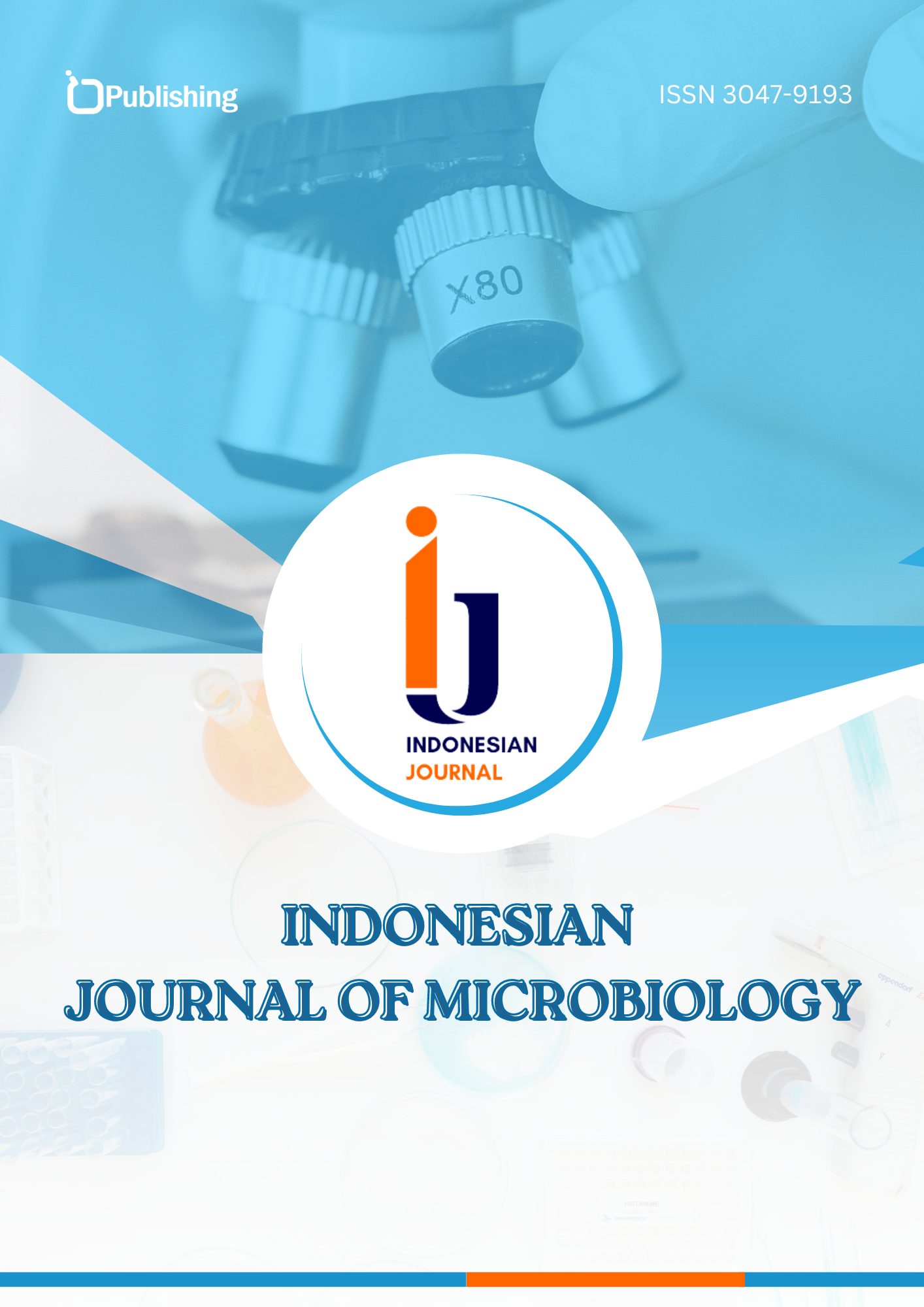Hygiene and Sanitation Implementation in Kitchen Aston Jember Hotel & Conference Center
DOI:
https://doi.org/10.47134/ijm.v1i1.2470Keywords:
Application of Hygiene and Sanitation, Food Quality, KitchenAbstract
The research on the implementation of hygiene and sanitation in the kitchen of the Aston Jember Hotel & Conference Center is presented in this report. In order to make high-quality cuisine, the author of this scientific paper wishes to know what measures are used to preserve kitchen hygiene and sanitation at the Lekker Restaurant Hotel Aston Jember. The author employs a qualitative descriptive research approach to accomplish this goal, which involves performing observations, interviews, and the use of documentation materials. Additionally, the theory of kitchen hygiene and sanitation is combined with other aspects connected to enhancing the quality of these things. The people with power over matters of sanitation and kitchen hygiene were identified as informants for this study. Data from informants, in the form of written or spoken material, was carefully read again, analyzed, and described.
References
Aminuah, A. Y. (2019). Laporan Akhir Penanganan Barang Bawaan Tamu di Concierge Section Hotel Melia Purosani Yogyakarta.
Bartram, J. (2018). Policy review of the means of implementation targets and indicators for the sustainable development goal for water and sanitation. Npj Clean Water, 1(1). https://doi.org/10.1038/s41545-018-0003-0 DOI: https://doi.org/10.1038/s41545-018-0003-0
Benny, G. P. (2016). Tugas Akhir Penerapan Hygiene dan Sanitasi Di Dapur Holiday Inn Resort Batam.
Carolina, F. A. (2017). Analisis Penerimaan Pengguna Sistem Informasi Akuntansi Dalam Perspektif Technology Acceptance Model (Studi Empiris Pada Perusahaan Distributor Alat Kesehatan Di Semarang).
de Kraker, M. E. A. (2022). Implementation of hand hygiene in health-care facilities: results from the WHO Hand Hygiene Self-Assessment Framework global survey 2019. The Lancet Infectious Diseases, 22(6), 835–844. https://doi.org/10.1016/S1473-3099(21)00618-6 DOI: https://doi.org/10.1016/S1473-3099(21)00618-6
Decent, J. (2018). Aktivitas Trainee Pada Departemen F&B Produk Dan Pelayanan Di Grand Clarion Kendari.
Gauthier, C. (2018). Public policy implementation and basic sanitation issues associated with hydroelectric projects in the Brazilian Amazon: Altamira and the Belo Monte dam. Geoforum, 97, 10–21. https://doi.org/10.1016/j.geoforum.2018.10.001 DOI: https://doi.org/10.1016/j.geoforum.2018.10.001
Gebremariam, B. (2019a). Effect of community led total sanitation and hygiene (CLTSH) implementation program on latrine utilization among adult villagers of North Ethiopia: A cross-sectional study. BMC Research Notes, 12(1). https://doi.org/10.1186/s13104-019-4519-2
Gebremariam, B. (2019b). Effect of community led total sanitation and hygiene (CLTSH) implementation program on latrine utilization among adult villagers of North Ethiopia: A cross-sectional study. BMC Research Notes, 12(1). https://doi.org/10.1186/s13104-019-4519-2 DOI: https://doi.org/10.1186/s13104-019-4519-2
Gill, N. (2018). Weed hygiene practices in rural industries and public land management: Variable knowledge, patchy implementation, inconsistent coordination. Journal of Environmental Management, 223, 140–149. https://doi.org/10.1016/j.jenvman.2018.06.017 DOI: https://doi.org/10.1016/j.jenvman.2018.06.017
Häggman-Henrikson, B. (2018). Mind the gap: A systematic review of implementation of screening for psychological comorbidity in dental and dental hygiene education. Journal of Dental Education, 82(10), 1065–1076. https://doi.org/10.21815/JDE.018.104 DOI: https://doi.org/10.21815/JDE.018.104
Haque, S. S. (2021a). The applications of implementation science in water, sanitation, and hygiene (Wash) research and practice. Environmental Health Perspectives, 129(6). https://doi.org/10.1289/EHP7762
Haque, S. S. (2021b). The applications of implementation science in water, sanitation, and hygiene (Wash) research and practice. Environmental Health Perspectives, 129(6). https://doi.org/10.1289/EHP7762 DOI: https://doi.org/10.1289/EHP7762
Kallam, B. (2018). Implementation science in low-resource settings: Using the interactive systems framework to improve hand hygiene in a tertiary hospital in Ghana. International Journal for Quality in Health Care, 30(9), 724–730. https://doi.org/10.1093/intqhc/mzy111 DOI: https://doi.org/10.1093/intqhc/mzy111
Lai, C. C. (2019). Implementation of a national quality improvement program to enhance hand hygiene in nursing homes in Taiwan. Journal of Microbiology, Immunology and Infection, 52(2), 345–351. https://doi.org/10.1016/j.jmii.2018.09.007 DOI: https://doi.org/10.1016/j.jmii.2018.09.007
Lerebours, A. (2021). Regulating sanitation services in sub-saharan africa: An overview of the regulation of emptying and transport of faecal sludge in 20 cities and its implementation. Utilities Policy, 73. https://doi.org/10.1016/j.jup.2021.101315 DOI: https://doi.org/10.1016/j.jup.2021.101315
Miawaty, F. (2021). Mengungkap Dampak Covid-19 Pada UMKM Sektor Kuliner (Studi Kasus: UMKM Kuliner Di Wilayah Rawamangun).
Müller, S. A. (2020). Implementation of the WHO hand hygiene strategy in Faranah regional hospital, Guinea. Antimicrobial Resistance and Infection Control, 9(1). https://doi.org/10.1186/s13756-020-00723-8 DOI: https://doi.org/10.1186/s13756-020-00723-8
Pahleviannur, M. R. (2019). Pemanfaatan Informasi Geospasial Melalui Interpretasi Citra Digital Penginderaan Jauh untuk Monitoring Perubahan Penggunaan Lahan. JPIG (Jurnal Pendidikan Dan Ilmu Geografi), 4(2), 18–26. DOI: https://doi.org/10.21067/jpig.v4i2.3267
Pahleviannur, M. R. (2022). Penentuan Prioritas Pilar Satuan Pendidikan Aman Bencana (SPAB) menggunakan Metode Analytical Hierarchy Process (AHP). Pena Persada. DOI: https://doi.org/10.31237/osf.io/6ghyz
Pahleviannur, M. R., Wulandari, D. A., Sochiba, S. L., & Santoso, R. R. (2020). Strategi Perencanaan Pengembangan Pariwisata untuk Mewujudkan Destinasi Tangguh Bencana di Wilayah Kepesisiran Drini Gunungkidul. Jurnal Pendidikan Ilmu Sosial, 29(2), 116–126. DOI: https://doi.org/10.23917/jpis.v29i2.9692
Peal, A. (2020). Estimating Safely Managed Sanitation in Urban Areas; Lessons Learned From a Global Implementation of Excreta-Flow Diagrams. Frontiers in Environmental Science, 8. https://doi.org/10.3389/fenvs.2020.00001 DOI: https://doi.org/10.3389/fenvs.2020.00001
Rosenthal, J. (2020a). Systems science approaches for global environmental health research: Enhancing intervention design and implementation for household air pollution (hap) and water, sanitation, and hygiene (wash) programs. Environmental Health Perspectives, 128(10), 1–12. https://doi.org/10.1289/EHP7010
Rosenthal, J. (2020b). Systems science approaches for global environmental health research: Enhancing intervention design and implementation for household air pollution (hap) and water, sanitation, and hygiene (wash) programs. Environmental Health Perspectives, 128(10), 1–12. https://doi.org/10.1289/EHP7010 DOI: https://doi.org/10.1289/EHP7010
Suwithi, N. W. (2008). Akomodasi Pehotelan jilid 1. Direktorat Pembinaan Sekolah Menengah Kejuruan.
Twinomucunguzi, F. R. B. (2020). Reducing groundwater contamination from on-site sanitation in peri-urban sub-saharan Africa: Reviewing transition management attributes towards implementation ofwater safety plans. Sustainability (Switzerland), 12(10). https://doi.org/10.3390/su12104210 DOI: https://doi.org/10.3390/su12104210
Yoeti, O. A. (2008). Perencanaan dan Pengembangan Pariwisata. Pradnya Paramita.
Downloads
Published
How to Cite
Issue
Section
License
Copyright (c) 2024 Ihza Wahyu Ferdianyah, Syah Riza Octavy

This work is licensed under a Creative Commons Attribution-ShareAlike 4.0 International License.










